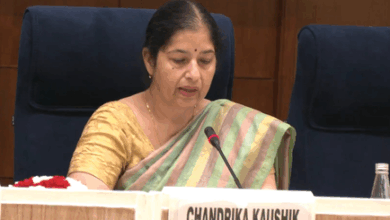
The world is still grappling with the full potential and widespread deployment of 5G technology, a revolution promising faster speeds, lower latency, and enhanced connectivity. Yet, the global gaze is already shifting towards the next frontier: 6G. This forthcoming generation of mobile communication technology is poised to redefine digital experiences, pushing boundaries far beyond what 5G can offer. For a rapidly digitizing nation like India, understanding its position, aspirations, and the road ahead for 6G is crucial. The question on many minds is: How far is 6G in India?
Understanding the Promise of 6G:
Before assessing India’s readiness, it’s essential to grasp what 6G fundamentally represents. While 5G aimed for speeds up to 10 Gbps and latency as low as 1 millisecond, 6G targets speeds of up to 1 Tbps (terabits per second) – a hundred times faster than 5G’s peak theoretical speeds. Latency is expected to drop to microseconds, approaching real-time communication.
But 6G is not just about speed; it’s a paradigm shift. It envisions a deeply integrated physical, digital, and biological world, enabled by ubiquitous, intelligent connectivity. Key characteristics and potential applications include:
* Extremely High Speeds: Enabling near-instantaneous data transfer for bandwidth-hungry applications.
* Ultra-Low Latency: Critical for real-time interactive applications, remote surgery, autonomous systems, and immersive experiences.
* Massive Connectivity Density: Supporting an unprecedented number of connected devices per square kilometer, vital for the Internet of Everything (IoE).
* AI Native Network: 6G networks will be inherently intelligent, utilizing AI and Machine Learning for self-optimization, resource management, and security.
* Integration with Sensing and Imaging: The network itself could become a massive sensor, enabling new forms of environmental monitoring, health tracking, and location-based services.
* New Spectrum Bands: Likely utilizing sub-terahertz (sub-THz) and terahertz (THz) frequency bands (100 GHz to 10 THz) previously untapped for communication.
* Revolutionary Applications: Haptic communication (touch over the internet), holographic telepresence, truly immersive Extended Reality (XR), digital twins for industries and cities, ubiquitous sensing, and seamless human-machine interfaces.
These capabilities promise transformative impacts across sectors like healthcare (remote diagnostics, robotic surgery), education (holographic classrooms), manufacturing (fully automated, intelligent factories), transportation (highly autonomous vehicles), agriculture (precision farming), and entertainment.
India’s Vision and Initiatives: The Bharat 6G Ambition
Recognizing the strategic importance of being at the forefront of this technological wave, India has articulated a clear vision for 6G. The Department of Telecommunications (DoT) unveiled the “Bharat 6G Vision” document, outlining the country’s objectives and roadmap. The core aim is not merely to be a consumer or adopter of 6G technology developed elsewhere, but to be a significant contributor to its design, standardization, and deployment, potentially emerging as a global leader in specific domains.
This vision is anchored around the IMT-2030 framework adopted by the International Telecommunication Union (ITU), which sets the stage for 6G research and standardization globally. India is actively participating in these international forums to shape the future of mobile communication standards.
A key initiative is the formation of the Bharat 6G Alliance (B6GA). Launched in 2023, the B6GA brings together telecommunications service providers, industry players, research institutions, academia, and standardisation bodies. Its mandate is to drive collaboration, foster innovation, identify priorities for research and development, build consensus, and facilitate market adoption of 6G technologies in India. The Alliance acts as a platform to synergize efforts across different stakeholders, ensuring a cohesive approach towards the 6G goal. The government’s push extends to funding research and development activities. Institutions like the Indian Institute of Technology (IITs), Indian Institute of Science (IISc), and various other engineering colleges and research labs are being encouraged and supported to undertake foundational research in areas critical for 6G, such as new waveform technologies, advanced antenna design (including intelligent reflecting surfaces – IRS), AI for network optimization, network slicing advancements, and security protocols.
Emphasis is also placed on developing an indigenous 6G stack – hardware and software developed within India. This aligns with the “Atmanirbhar Bharat” (Self-Reliant India) initiative, aiming to reduce dependence on foreign vendors for critical network infrastructure, enhancing national security and creating domestic manufacturing opportunities.
Current Status: In the Realm of Research and Development
As of early-to-mid 2025, it is crucial to understand that 6G technology is still firmly in the research and conceptualization phase globally. There are no widespread commercial deployments or even large-scale trials anywhere in the world yet. In India, the situation reflects this global reality. The focus is currently on:
* Foundational Research: Exploring theoretical concepts, running simulations, and conducting early lab experiments on potential 6G technologies.
* Talent Development: Training researchers and engineers in the advanced fields required for 6G R&D.
* Collaboration: Facilitating interaction between academia, industry, and government bodies through platforms like B6GA.
* Standardization Participation: Actively contributing to ITU and 3GPP discussions shaping future 6G standards.
* Identifying Use Cases: Exploring potential applications of 6G that are relevant and beneficial specifically for India.
India is still heavily invested in the 5G rollout, which is expanding rapidly across the country. The experience gained from deploying and optimizing 5G networks, particularly in diverse geographical and demographic conditions, will provide valuable lessons for the eventual transition to 6G. So, to directly answer “How far is 6G in India?”: Widespread deployment or even large-scale trials are still several years away. India is currently in the proactive planning and early-stage research phase, aligning its efforts with the global R&D timeline.
Challenges on the Path to 6G:*
Despite the clear vision and proactive steps, India faces significant challenges on its path to 6G:
* Advanced R&D Infrastructure: Developing cutting-edge research facilities capable of working with sub-THz and THz frequencies and advanced AI/ML integration requires substantial investment.
* Skilled Workforce: A significant shortage exists globally and in India for researchers and engineers with expertise in the highly specialized domains required for 6G.
* Standardization Influence: While participating, India needs to exert significant technical influence to ensure future standards are globally accepted and also beneficial for its specific needs and ecosystem.
* Spectrum Availability and Allocation: Identifying, clearing, and allocating new, higher frequency spectrum bands for 6G is a complex process involving technical studies and regulatory decisions.
* Infrastructure Deployment: Rolling out a 6G network will require an even denser infrastructure than 5G, potentially involving massive numbers of small cells and a robust fiber backhaul, demanding huge capital expenditure.
* Cost of Technology: The advanced hardware and software for 6G are likely to be significantly more expensive initially.
* Policy and Regulatory Framework: Developing supportive policies for spectrum sharing, infrastructure deployment, data privacy, and security for the complex 6G environment is essential.
* Global Competition: Many countries and global tech giants are heavily investing in 6G R&D, creating a highly competitive landscape.
*Opportunities for India:*
Conquering these challenges presents immense opportunities for India:
* Becoming a Global Leader: By focusing on indigenous R&D and contributing to standards, India has the potential to lead in specific areas of 6G technology or application development.
* Boosting Economic Growth: 6G can unlock new industries, create millions of jobs, and drive digital transformation across all sectors, significantly boosting India’s economy.
* Enhanced Digital Inclusion: More affordable and ubiquitous connectivity can help bridge the digital divide, bringing remote areas and marginalized communities into the digital fold.
* Strategic Autonomy: Developing indigenous capabilities reduces reliance on foreign technologies, enhancing national security and technological sovereignty.
* Innovation Hub: India’s strong IT sector and burgeoning startup ecosystem can leverage 6G to create innovative applications and services tailored for local needs and global markets.
*Timeline Perspective:*
Based on global consensus and India’s stated goals:
* The global standardization process for 6G is expected to mature around 2028-2029.
* Early commercial deployments of 6G are anticipated globally around 2030.
India’s “Bharat 6G Vision” aligns with this timeline, aiming for India to be ready with its contributions and capabilities to participate in or even be among the early wave of 6G deployments around the year 2030.
India has demonstrated a clear foresight and proactive strategy towards 6G. By establishing the Bharat 6G Vision and launching the Bharat 6G Alliance, the country has signaled its ambition to be a significant player in the next generation of mobile communication. Research and development are underway, and the groundwork is being laid through policy focus and collaboration initiatives.
However, the journey to 6G is long and complex. It requires sustained investment in cutting-edge research infrastructure, development of a highly skilled workforce, navigating complex global standardization bodies, overcoming significant technical hurdles related to new spectrums and network architecture, and mobilizing massive capital for eventual deployment.
So, while the vision is clear and the initial steps have been taken, 6G deployment in India is not imminent. It is still approximately 5-7 years away from even early commercialisation, aligning with the global timeline of around 2030. India is actively participating in the global race, aiming not just to adopt 6G, but to contribute to its very foundation. The path ahead is challenging, but the potential rewards – a digitally empowered, economically vibrant, and technologically self-reliant India – make it a journey well worth undertaking.











